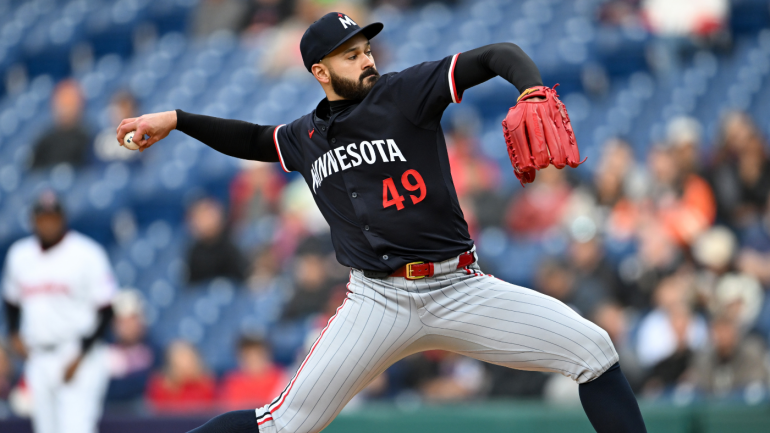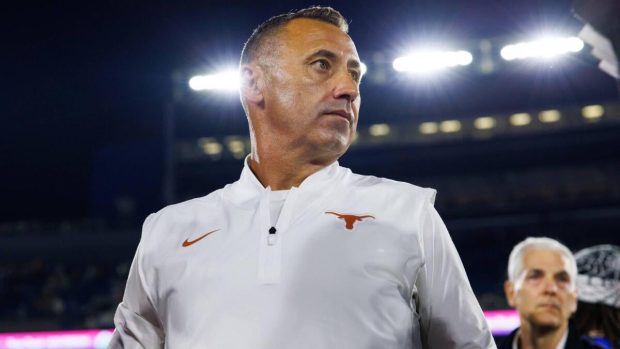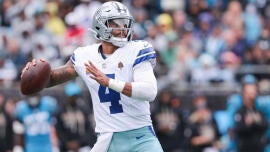

BOSTON — Few teams have leaned on their pitching the way the Minnesota Twins have. Even fewer could trust that approach with the hope that it could land them in October.
“We always pitch to the strength of the pitcher,” Twins catcher Christian Vazquez told CBS Sports recently. “It’s easy to call a game.”
In truth, positive outcomes haven’t come easy for the Twins to begin this season. They enter Wednesday with a 16–20 record, sitting fourth in the AL Central. Their most productive position player? Harrison Bader — a veteran outfielder more often cast as a fourth option in recent years. In 36 games, Minnesota has launched just 30 homers and their .237 team average is 22nd in baseball. While he’s still very much a plus defender, capable of winning games with his glove, shortstop Carlos Correa is slashing just .233/.270/.341 with an abysmal 71 OPS+ and two homers.
Pitching, though, remains the Twins’ strength. They’re eighth in MLB in ERA (3.53), sixth in K/9 (9.25) and first in strikeout-to-walk ratio (3.44). Their blueprint and has become a model for organizations across the league. Red Sox director of pitching Justin Willard, who spent six seasons with the Twins as both a pitching coach and coordinator, has used his former club’s approach with the hope that it will elevate Boston’s pitching staff.
“Obviously, I started with the Twins and it boils down to a very simple phrase that’s really hard to actually accomplish, but it’s to throw nasty stuff in the zone, right?,” Williard said. “And understanding what each guy can do to develop nasty stuff, and then having the intent to say ‘OK, I’m going to throw it in the strike zone.”
Throwing your best stuff in the zone takes more than just skill — it takes conviction. Confidence and strategy go hand in hand. One rarely works without the other, and more often than not, it’s the confidence to trust your stuff in the zone that lags behind the ability to do it.
The Twins, though, have mastered it. And with Willard — a product of Minnesota’s system — the Red Sox have started to mirror parts of that approach. The Twins lead the majors in plate appearances that have reached a 0 and 2 count. The Red Sox are a close second.
The Twins have yielded just 93 walks this season, tied for the lowest mark in the majors. Meanwhile, the Sox are tied for seventh with 111.
“If you throw [quality strikes in the zone] 100 times, success is going to happen 90 times,” Willard said. “That 10 times might bite you But if we’re going to make the best bets we possibly can, we’re trying to place our best bet to optimize outcomes that could potentially happen.”
For the Twins, part of that intent is embedded both in the regular season and in spring training. During the latter, they spend three weeks in meetings focused on self-awareness — sessions labeled internally as a time to “get to know themselves meetings.”
“We go into our video room and they ask us who we are and what we’re trying to do,” starter Pablo López said.
The pitchers then respond with who they think they are before the staff counters with what the data and numbers show.
“Well from a statistics standpoint, this is what your fastball does for you,” López said, summarizing the kinds of conversations held during those sessions. “This is where it plays. This is where your fastball plays. This is where your offspeed plays against righties and lefties.”
Then, when the pitcher is on the mound, the Twins keep track of what they deem “early and ahead.”
In its simplest form, “early and ahead” refers to a pitcher who either finishes the at-bat within the first three pitches or throws at least two strikes in that span. For example, if you get to 0 and 2, that’s considered a successful “early and ahead.” The same applies with a 1 and 2 count.
“It’s pushing us to be aggressive in the zone,” added López. “It’s putting yourself in the best situation to go deep into the game to get to leverage counts.”
Teaching command, though, isn’t always easy, so it’s become sort of a base-level requirement if you want to pitch for the Twins.
“I think the Twins do a good job, too, just acquiring pitchers that naturally go for that, throwing a lot of strikes,” said starter Joe Ryan “Then they help them refine their craft.”
Commanding the baseball also means throwing effective pitches outside the zone, avoiding damage while trying to get the batter to chase.
López, for instance, ideally wants his 0-and-2 pitches to look like a strike for 80% of the way before disappearing out of the zone. When he gets in those counts, much of the work is done, feeling as though if he ever seized control, it’s his fault.
“If I get beat in an 0 and 2 count in the zone, I’m like I gotta be better than that,” López said. “…Average goes down, OPS goes down, slug goes down. So those are my kill counts, and those are the counts that I’m going to [try to get to] and then I’m going to try to get them to chase.”
Despite some leakage from the bullpen, Twins starters have been as good as advertised this year. Twins starters have a 3.45 ERA through 36 games, the fifth-best mark in MLB.
But wins have been hard to come by for Minnesota in an AL Central that continues to improve. And while the division rises, the rest of the American League appears to have taken a step back, offering some hope for the Twins to get back to the postseason after staying home last October.
This news was originally published on this post .









Be the first to leave a comment